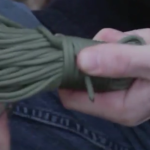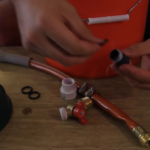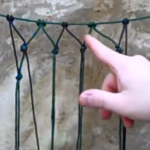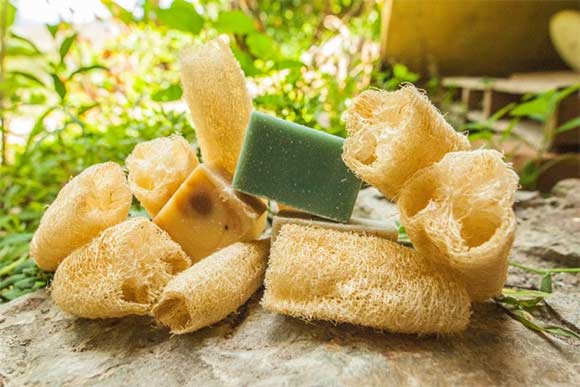
Loofah products that you see on store shelves actually come from sponges that are related to the gourd family.
You can grow your own and develop a limitless supply of these excellent cleaning products that can be used on the skin as well as for household chores.
Let’s take a look at how easy it is to grow your own crop and produce a nice stockpile.
Patience is Key
Loofah gourds take a long time to grow, up to seven months in some cases, so it’s important to plan ahead and be patient. It also takes about six weeks for sprouts to germinate once you plant the seeds. However, one vine can produce up to 30 gourds, which makes this project worth the time that it takes to harvest and process them.
Preparing the Seedlings and Planting
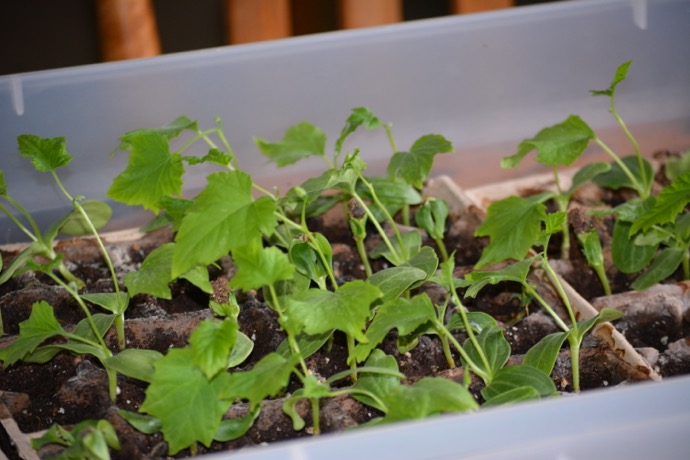
Loofahs grow best in sunny and warm conditions, and it’s a good idea to start planting the seeds in small containers before the start of the growing season. Remember that they can take up to six weeks to become large enough to transplant. Wait until the sprouts get about a foot long before transplanting them into the ground or the bed of your indoor garden. Keep in mind that Loofah vines can grow as tall as 30 feet, but the height of your crop will depend on the size of the trellis that you are using. If you don’t have a trellis, you can also use a chain link fence and achieve similar results.
Plant the seedlings along the outer edge of the trellis or fence and support the stems by weaving them behind one or two of the pieces of wood or chain. Make sure that the top of the stems are facing outward and are not encumbered by any material that could stunt their growth. The best place to grow them is in an area that receives abundant and direct sunlight for most of the day.
Growing and Harvesting
Loofah vines need lots of water, but not to the point where the soil is continually saturated. Just make sure to be consistent and add water as the soil loses its moisture. You will also need to water more as they grow. The vine will develop little flowers after a few weeks, and the gourds will start to grow behind them. Keep watering to prevent the vines from shriveling up and drying out. You will be able to tell the health of the vine and gourd simply by eyeballing them throughout the growing season.
The gourds will be ready for harvesting once they reach a foot long or greater. They will also sometimes change color from green to a brown and become lighter. The skin will loosen and become easy to peel as well. Break or cut the gourds from the stems. Slam the gourd against a hard surface once or twice. This will loosen the skin as well as dislodge the seeds inside. Pull off the bottom of the gourd and most of the seeds will fall out.
Set the seeds aside and allow them to dry out for a day or so if you want to keep them for future use. If you decide to keep the seeds, make sure that you remove the outer membrane that will easily peel off once they have dried out. It’s important that the seeds are completely dried before storing them in order to prevent mold from forming over the course of time.
Peeling the Loofah
Find a weakness along one of the seams in the skin of the gourd and start to peel it apart. Keep peeling and pulling until it separates from the spongy material inside. You can also moisten the loofah as you peel or soak the gourd in water in order to soften it up a bit to make peeling easier. Remove any additional seeds as you encounter them. Peel off the skin by pulling it over the top, and remove any bits that remain.
Give the loofah a good rinse with some pressure water in order to remove the slimy exterior and sap along with any remaining seeds. If your loofah is dark, you can also soak it in bleach to lighten the color. Once the loofah has been rinsed, allow it to completely dry in the sun. Don’t cut or store the sponge until it is completely dried out in order to avoid the formation of mold. All you need to do now is cut the sponge to the size of your liking and you’re good to go.
Store them in a cool and dry place, and you can use them whenever the need arises. Try this out for yourself, and see how you can use this fantastic plant as a sponge that may be more effective than store-bought alternatives.



